This topic takes on average 75 minutes to read.
There are a number of interactive features in this resource:
 Chemistry
Chemistry
 Biology
Biology

The ability of the DNA molecule to make exact copies of itself is what makes it ideal as the molecule of inheritance. DNA replication allows all of the cells of your body – all produced from the original cell formed when an ovum and a sperm met – to carry the same genetic information. The importance of enzymes such as DNA helicase, DNA polymerase and DNA ligase for life on earth cannot be overestimated. Look at the diagram below to see how this elegant process happens, and follow it through in the animation which follows.
Step 0: The DNA double helix
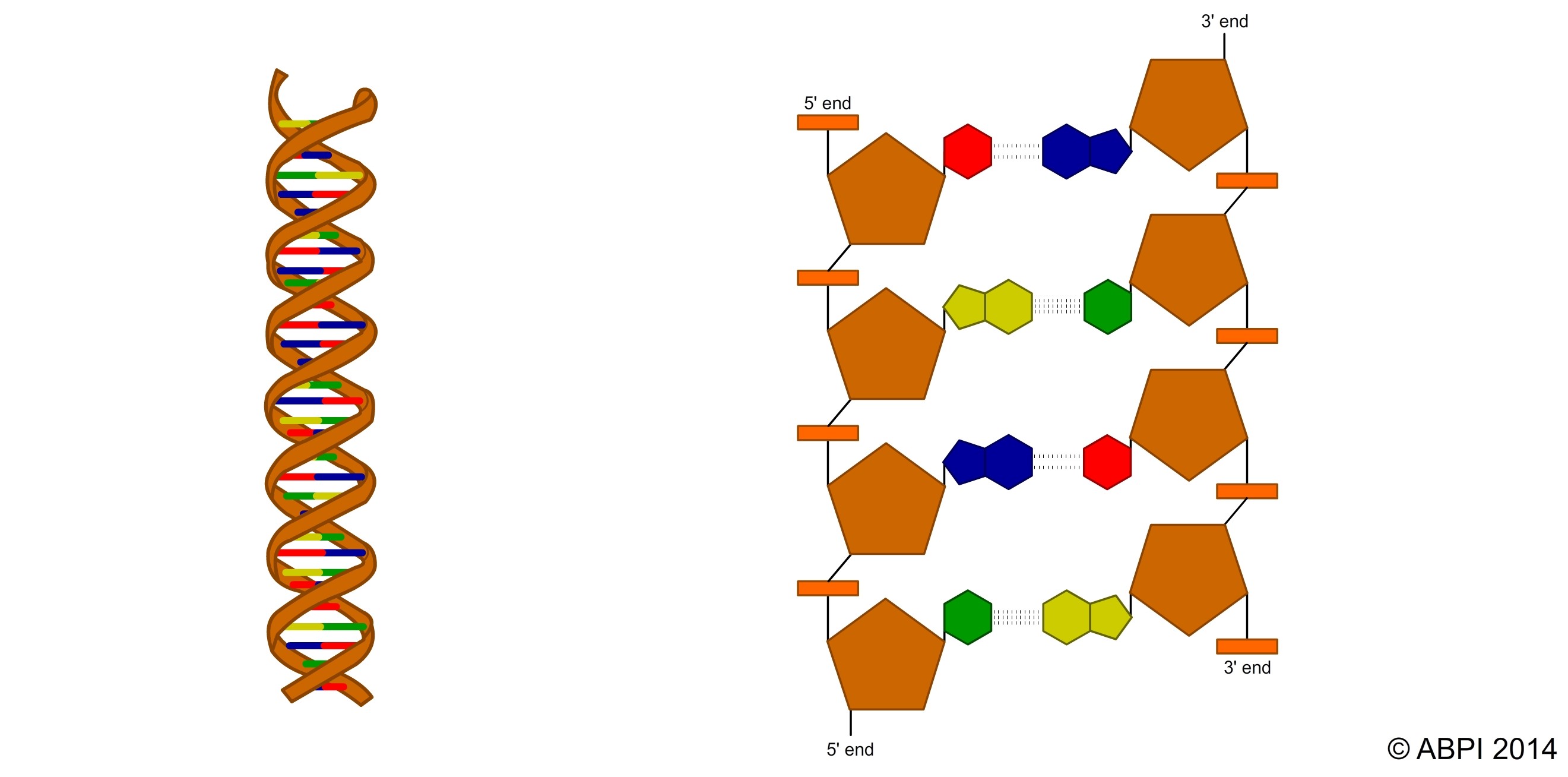
Step 1: The enzyme DNA helicase unwinds the DNA double helix by unzipping the hydrogen bonds between the base pairs. This prepares the molecule for replication, transcription or recombination.
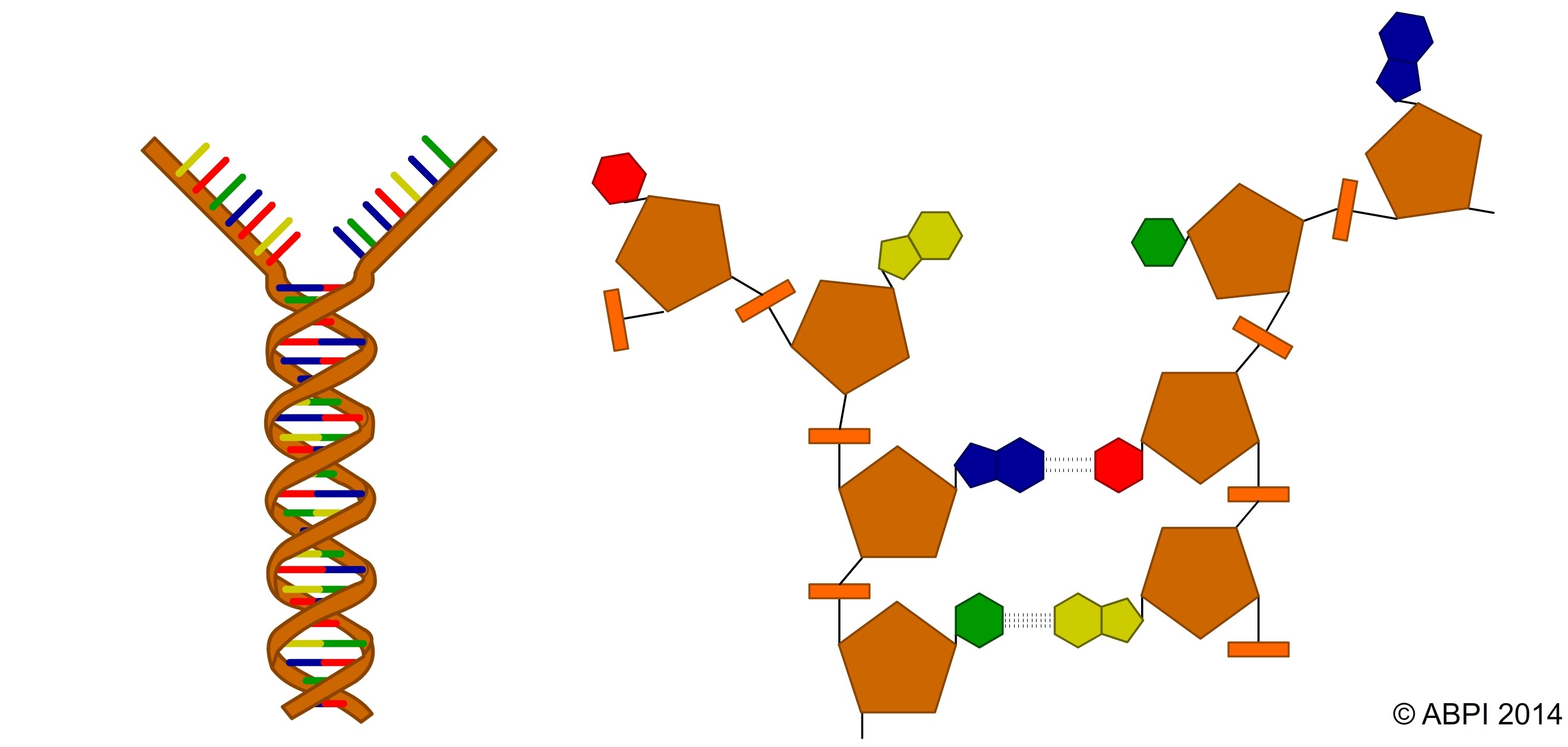
Step 2: The original strands act as templates for the new DNA strands. The exposed bases attract free DNA nucleotides and new hydrogen bonds are formed between the matching base pairs. The enzymes DNA polymerase and DNA ligase control the process and ensure that the copies are exact.
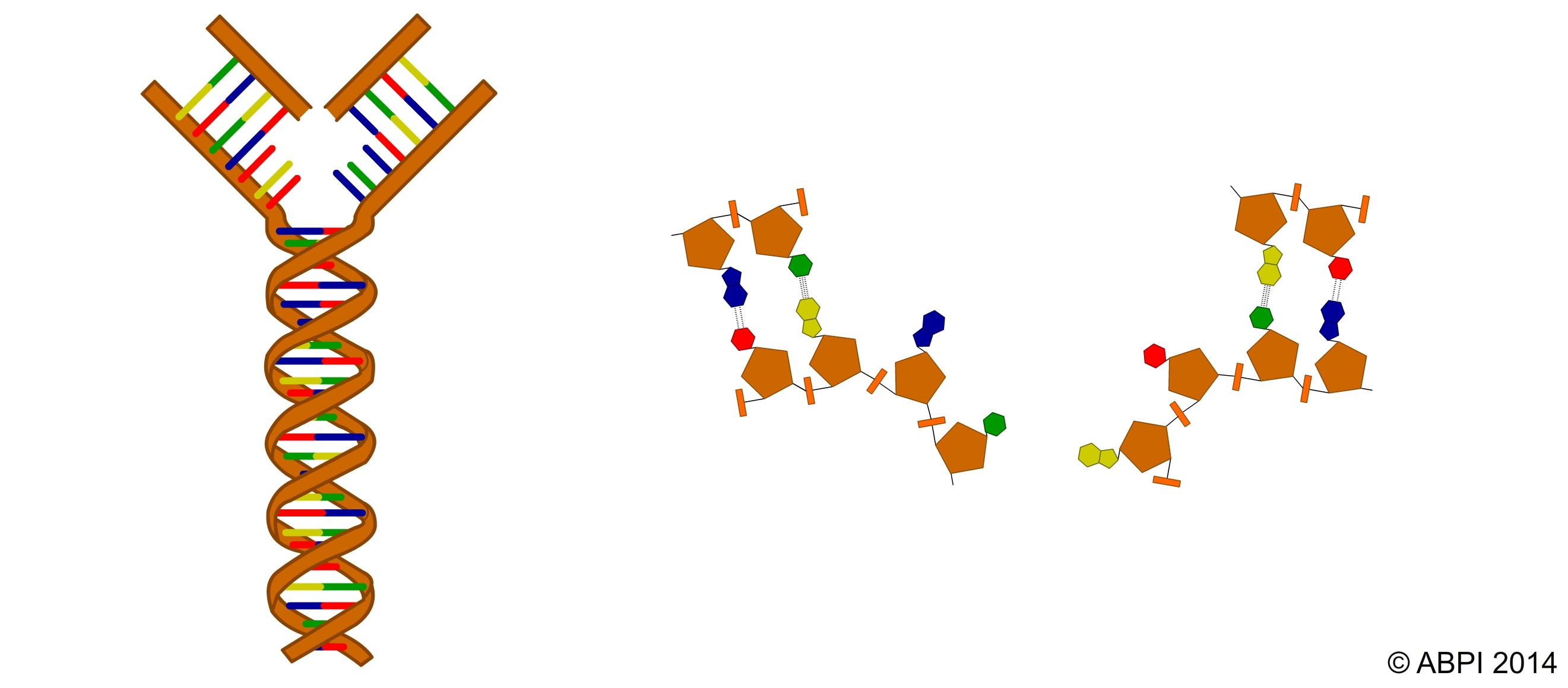
Step 3: As the hydrogen bonds form within the structure, the molecule coil up into their typical double helix shape. At the end of the process, there are two new DNA double helices, each identical to the original.
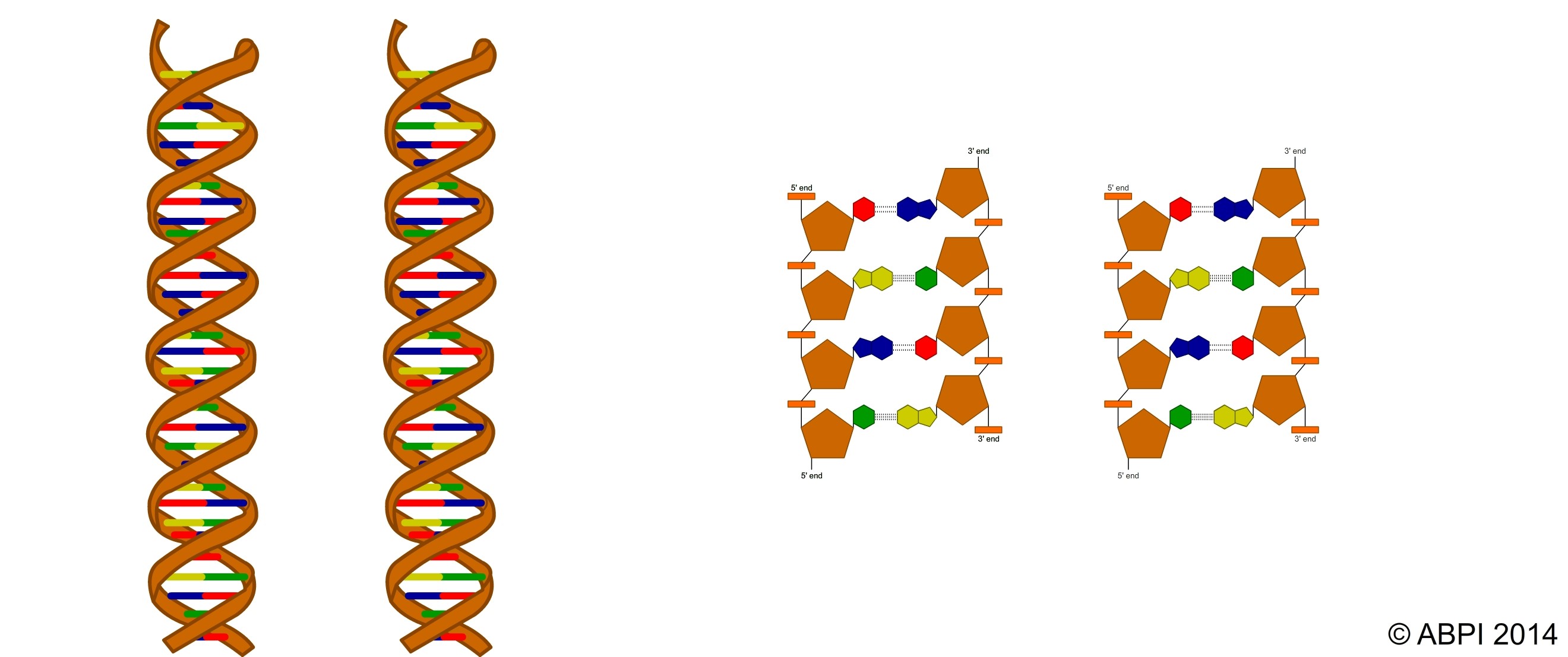
For some years after the structure of the DNA double helix had been worked out, scientists argued about how DNA replicated itself. There were two main theories:
The arguments were finally settled by Matthew Meselson and Franklin Stahl in a series of experiments which are best seen in action:
1. Control
In this control experiment, two reference lines are created in the centrifuge ‒ one for a DNA double helix known to be synthesised using only 'heavy' nitrogen (15N), and one for a DNA double helix synthesised using only 'light' (normal) nitrogen (14N).
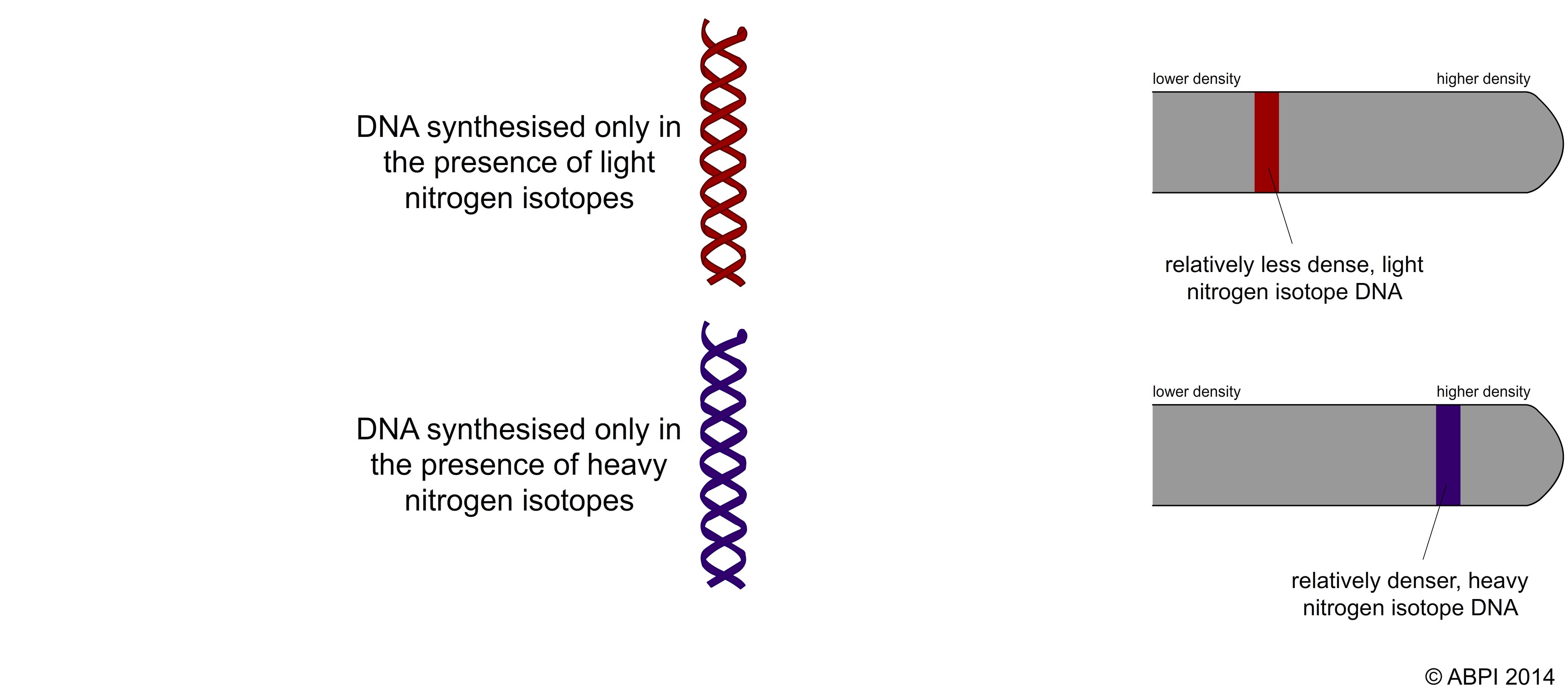
2. Conservative replication
If DNA replication is conservative, the result of placing 'heavy' 15N double helix of DNA in a medium containing only 'light' 14N atoms will be the original 'heavy' 15N DNA double helix and a new 'light' 14N DNA double helix.
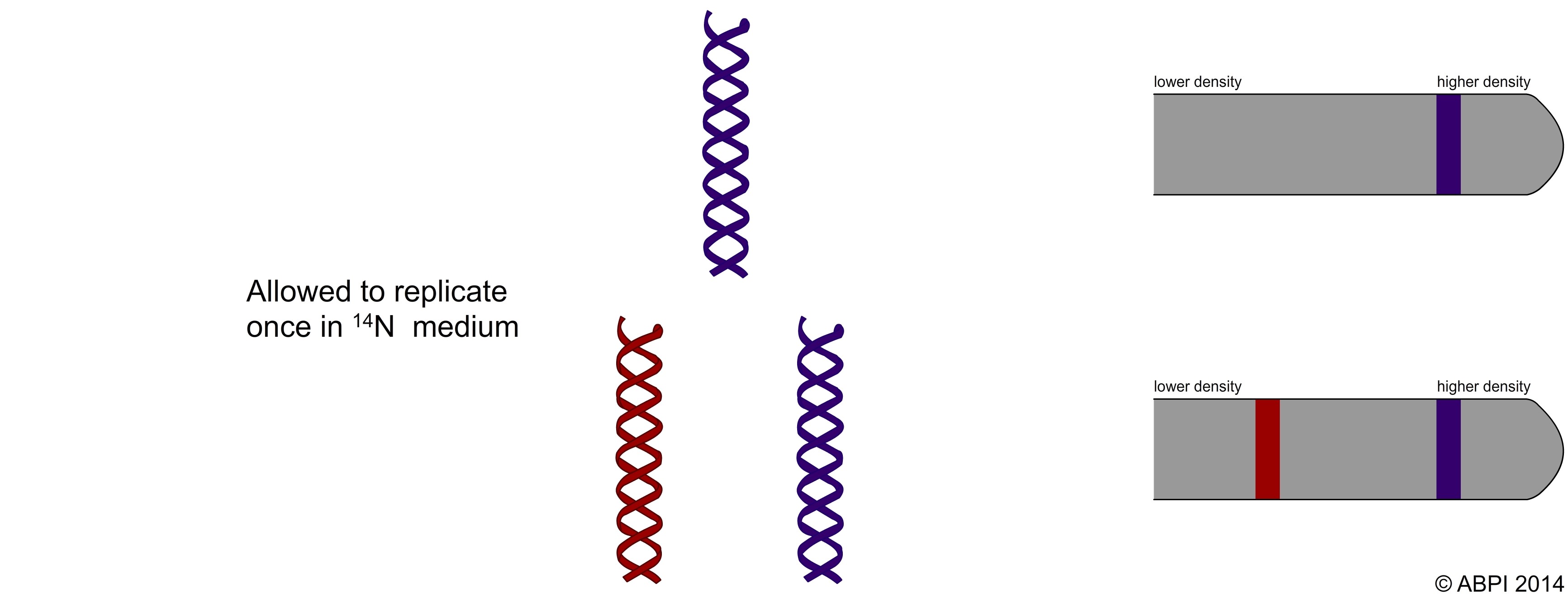
3. Semi-conservative replication
If DNA replication is semi-conservative, the result of placing 'heavy' 15N double helix of DNA in a medium containing only 'light' 14N atoms will be two double helices of hybrid DNA. Each will contain one strand of 'heavy' 15N DNA and a new strand of 'light' 14N DNA.
If hybrid DNA is allowed to replicate again in the 'light' 14N medium, half of the DNA double helices will have only 'light' 14N. The other half will be hybrid helices with one strand of the original 'heavy' 15N DNA and a new strand of 'light' 14N DNA.
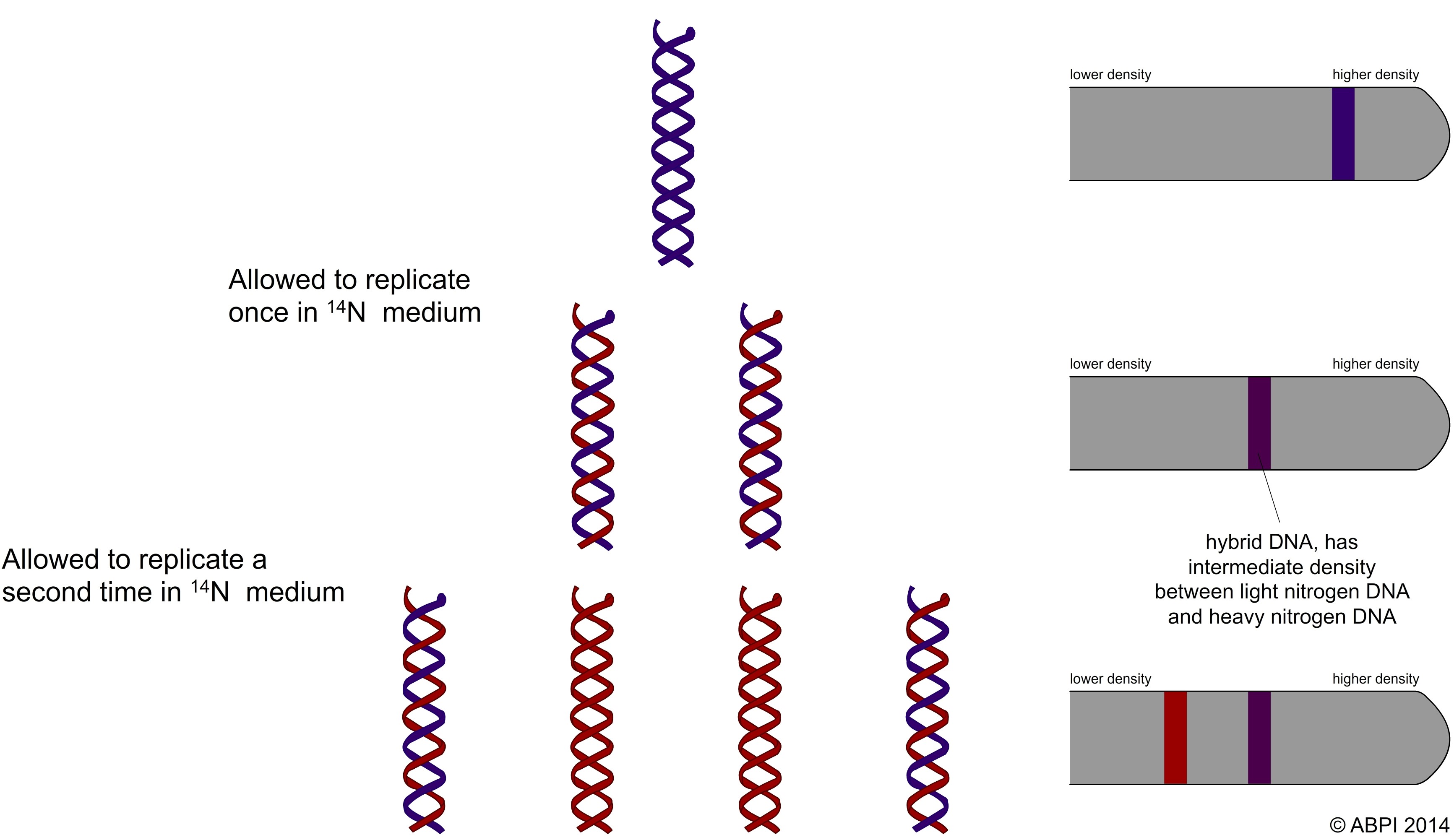
This classic experiment showed scientists exactly how DNA replicated